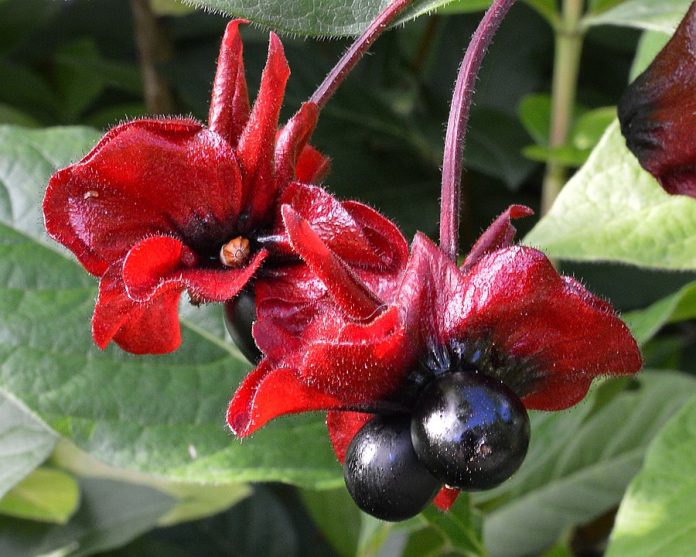
Featured Photo by Ryan Hodnett / CC BY-SA 4.0
A field guide on how to identify and propagate Twinberry Honeysuckle (Lonicera involucrata), a hardy shrub that is native to the boreal forests.
How to Identify Twinberry Honeysuckle (Lonicera involucrata)
Leaves
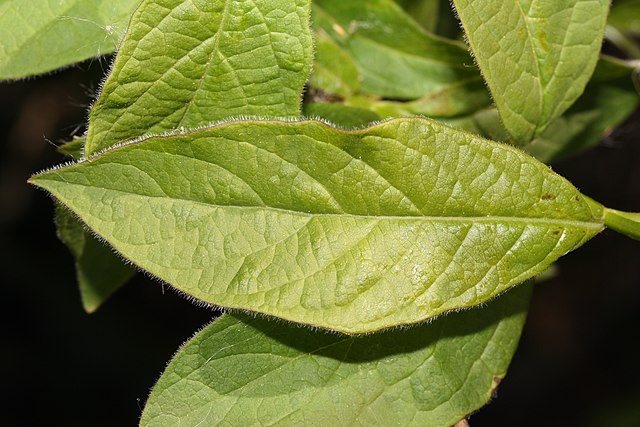
Twinberry honeysuckle leaves are elliptical to lance-shaped, with entire margins (smooth), and covered in tiny little hairs. They grow on the stems in opposite arrangements.
Fruit
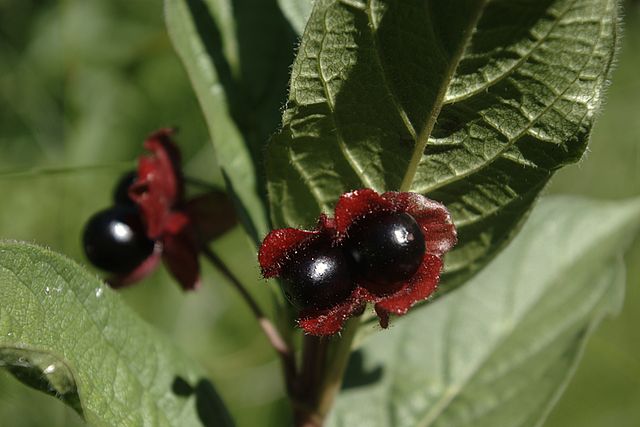
Twinberry honeysuckle fruits are small, round and grow in pairs. They each measure about 1/4 inch in diameter and have smooth, shiny skin that can be either black or red in color.
Each berry is surrounded by a thin, papery bract that forms a protective covering around the fruit.
The flesh of the berry is translucent and contains several small seeds.
When ripe, the fruit has a slightly bitter taste and is not typically eaten by humans.
Flower
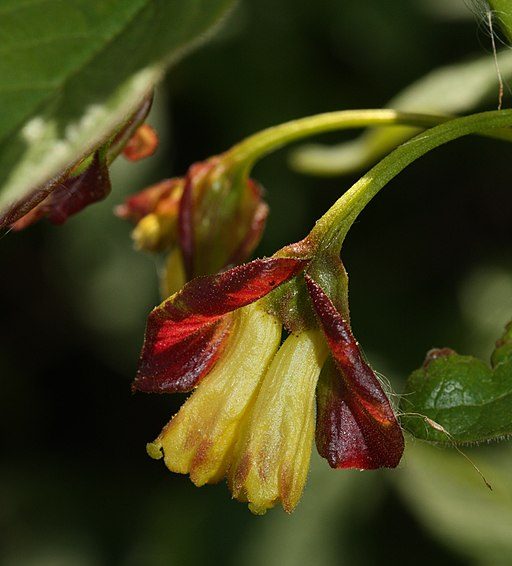
Photo by Walter Siegmund / CC BY-SA 3.0
The flowers are small, tubular-shaped, and arranged in pairs that grow from the leaf axils.
They are typically a yellow-green color and have two lips, with the upper lip being shorter than the lower lip.
If you can smell them, you’ll notice they have a sweet fragrance that attracts pollinators such as bees and butterflies.
Flowering Season
Twinberry honeysuckle has a long blooming season, you can spot blooms from early spring until the end of summer.
Habitat
You can typically find it growing in moist to wet habitats such as swamps, bogs, and along streams and rivers.
Some other understory plants and trees that associate with twinberry honeysuckle are:
- Dewberry (Rubus pubescens)
- White Cedar (Thuja occidentalis)
- Bluebead (Clintonia borealis)
Wildlife Value
Twinberry honeysuckle fruits provide food for a variety of birds and small mammals.
The fragrant flowers attract insect pollinators such as bees and butterflies.
How to Propagate Twinberry Honeysuckle (Lonicera involucrata)

Hardiness Zone: 4-9

Soil Type: Well-drained clay, loam, sand.

Water: Normal to High.

Exposure: Full Sun to Partial Shade
You can propagate twinberry honeysuckle with two effective methods:
- Stem Cuttings: It provides established trees faster, but is tricky.
- By Seed: It can be done at a large scale quickly with a good chance of success.
How to Propagate Twinberry Honeysuckle (Lonicera involucrata) by Seed
If you want to propagate Twinberry Honeysuckle, the best way is to start from seed. Here are some tips on how to do it:
How to Harvest Seeds
Harvesting: Wait until the fruit is fully ripe, which usually happens in mid to late summer, then remove the pulp and extract the seeds. Dry the seeds and store them at room temperature until stratification.
Stratification: Seeds need to undergo a period of cold stratification to break their dormancy. Store the seeds in a plastic bag filled with moist sand in the refrigerator for 60 days.
Sowing
Sowing: Sow the seeds in a seed tray or individual pots in early spring, at a depth of 1/16 inch. Cover lightly with soil and water.
Germination: Twinberry Honeysuckle seeds can take several weeks to several months to germinate. Keep the soil moist and place the tray or pots in a cool, bright location.
Transplanting: Once the seedlings have grown to a height of 2 to 3 inches, they can be transplanted into larger pots or directly into the ground.
How to Propagate Twinberry Honeysuckle (Lonicera involucrata) by Cuttings
If you want to propagate Twinberry Honeysuckle using cuttings, here are some tips:
How to Harvest
Timing: The best time to take cuttings is in the summer when the plant is actively growing. Wait until the stems are semi-hardened before taking cuttings.

Cutting Length: Aim for 6-8 inches for each cutting, with at least 2 pairs of nodes. Make sure to use clean, sharp pruning shears to prevent damage to the stems.
How to Root & Grow
Rooting Soil: Use a well-draining rooting medium, such as a mix of peat and perlite or coarse sand, to propagate Twinberry Honeysuckle cuttings. Make sure the soil is moist but not waterlogged.
Duration: They can root quite quickly (3-4 weeks) if you give them the right conditions. Keep them in a warm, bright location but out of direct sunlight.
Wintering: Bring the cuttings indoors to overwinter, or cover them with a layer of mulch or snow if they are in an outdoor location.
Transplanting: In the spring, re-pot the cuttings in a good compost/soil mix once they start to show signs of new growth. Make sure to add some slow-release fertilizing granules to promote healthy growth.
Twinberry Honeysuckle is a species of Lonicera plant. If you want in-depth detail on how to propagate Lonicera, take a look at our parent article.
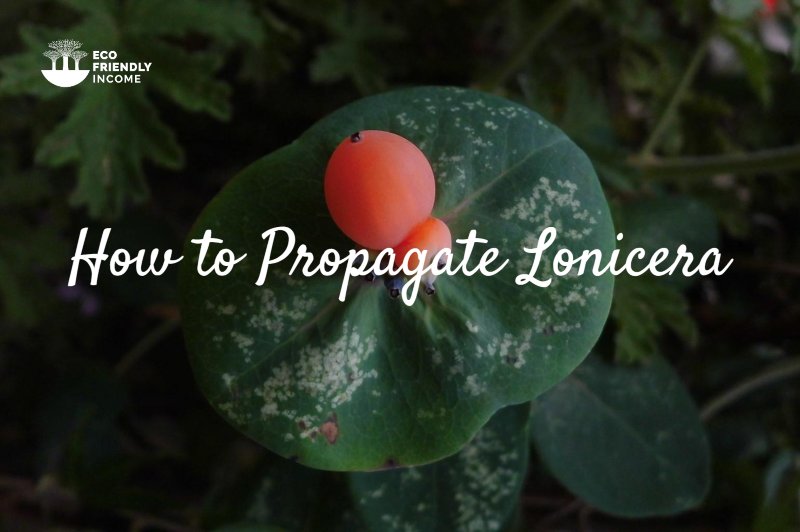
FAQ
A: Twinberry honeysuckle fruits are said to be poisonous, so it’s not recommended to eat.
A: It’s found across most of Canada, excluding the tundra, and a large part of the western side of the United States.
A: Yes, the flowers have a sweet, but pungent smell.
